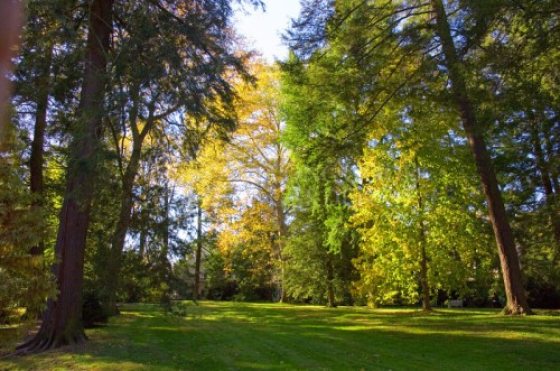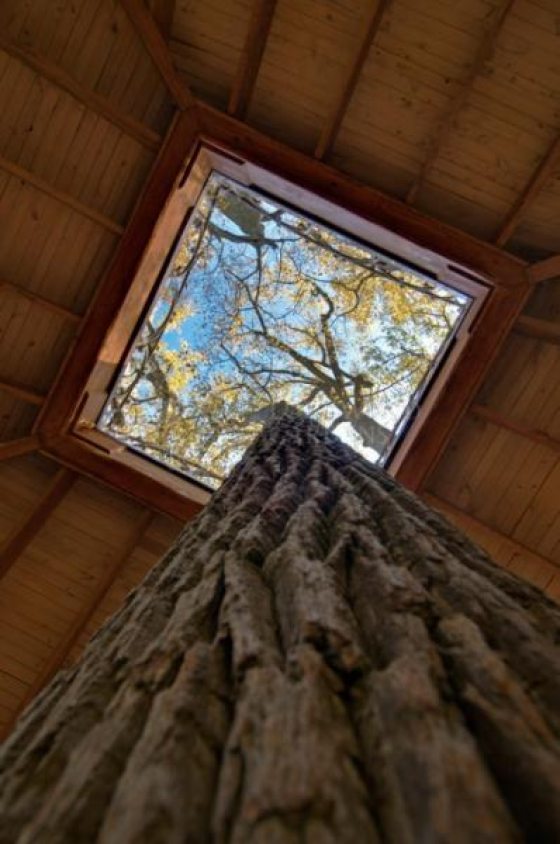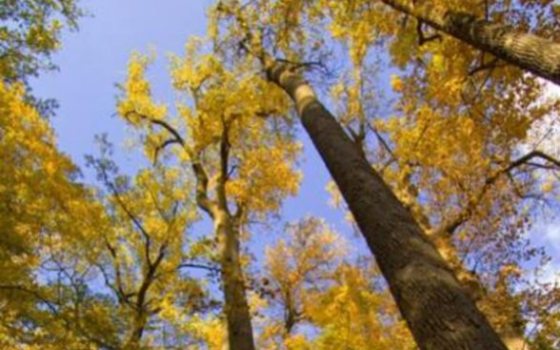As a child growing up near the Susquehanna River in northeast Maryland, I was surrounded by many tulip-trees in our woods. Some I just dreamed of climbing, but the first branches were usually more than 40 feet from the ground. There was a smaller one in our back yard where I managed to get to the first branch (and only the first branch). Every day when I took my dog for a walk, we would go by that tree and I would look up and think, “Man, if I could only get to the top—imagine the view from up there.” I never did get to the top of that tree, but here at Longwood I have climbed many trees that are higher than the 70-foot tulip-tree in my backyard.
Longwood Gardens has so much to offer in the way of trees. Thanks to Pierre du Pont, we have this beautiful garden and its amazing old trees. Pierre bought the land for exactly that reason: to save a group of trees. The trees that he saved are incredible specimens, but I am here to tell you about the giants living among us.

Peirce's Park.
Among our giants, one stands out. The tree, a tulip-tree (Liriodendron tulipifera) we’ve named Pierre’s Poplar, is located on the Forest Walk in the northern part of the woods.

Location of Pierre's Poplar.

Tulip-trees in Longwood's Forest Walk.
It has been growing there for many years, hidden in a valley right off the trail that bisects the middle of the woods. Thanks to Scott Wade, State Coordinator of the Champion Tree Program who discovered the tree, Pierre’s Poplar has been put on the map. It is now on the Pennsylvania big trees list and is a major player among the trees at Longwood Gardens. The giant measures in at a whopping 164.2 feet tall, with a circumference of 146 inches and a spread of 73 feet. It has a score of 329 points on the registry. The tree is the tallest recorded Liriodendron in the northeast United States.
Liriodendron tulipifera (leer-ee-oh-DEN-drawn too-lih-PIFF-er-uh) is a scientific tree name that just flows off the tongue, doesn’t it? Most people refer to the tree as a tulip-tree or tulip poplar, but the Latin sounds better to me. Many know what a tulip poplar is and how to spot them in the forest because of their long straight trunks and wide-spreading canopies. It is one of America’s tallest native deciduous trees and can grow up to 200 feet tall.

Tulip poplar chest made locally for Peirce family circa 1840-1900.
To climb a tree this tall, I first use a big shot (like a giant sling shot) to set the access line on a branch high in the tree. I ascend to the end of the access line. Next I advance my rope by throwing the line to the next highest branch and continuing to climb.
We measure the height of the tree by raising a pole to the tip of the highest branch. The pole has a line attached that extends all of the way to the ground. The arborists on the ground mark the point where the line touches the ground and the tree’s final height is determined by measuring the length of the rope.
In this short video, the arborists are climbing and measuring Pierre’s Poplar.
We measured the height of the tree to be 163 feet—that is half the length of a football field!

Tulip-tree in the Lookout Loft treehouse.
The tallest recorded tulip-tree, with a height of 191.9 feet, is named the Tall One and is located in the Smoky Mountains of North Carolina. A member of the Eastern Native Tree Society just discovered the tree last year. It took a team of five arborists to climb and measure it. They had to hike in four miles to the remote undisclosed location of the tree. The Eastern Native Tree Society is a great group of people who are finding and documenting huge trees. Thanks to that group for the work they do to preserve our forests.
The tulip-tree, or tulip poplar, is often thought to be in the Poplar family, but it is not. It is of the Magnoliaceae family. The wood from tulip-trees is used for furniture and cabinet making. The wood has a deep purple/bluish stain that some people find attractive. It is easy to work with and is fine-grained. Even though it is great for furniture making, the wood can be weak and brittle in the tree. It has a tendency to be broken up in storms, as is the case with any improperly pruned tree.
There are giants among us—in our local forests, parks and gardens… you never know what may be found. Measuring trees, or simply learning to appreciate and enjoy the trees and forests in the Brandywine Valley, especially at Longwood Gardens, is a challenge that awaits everyone willing to put in the time and effort.
I hope that you can join us as we celebrate Arbor Day this Friday and Saturday (April 27 & 28, 2012). We’ll be on hand to answer your tree-care questions, kids will get the chance to gear-up and experience what it’s like to be an arborist, you can tour our Champion Trees, and more.


